Surfing in Hawaii and Australia: Exploring the Depths of Oceanic Heritage
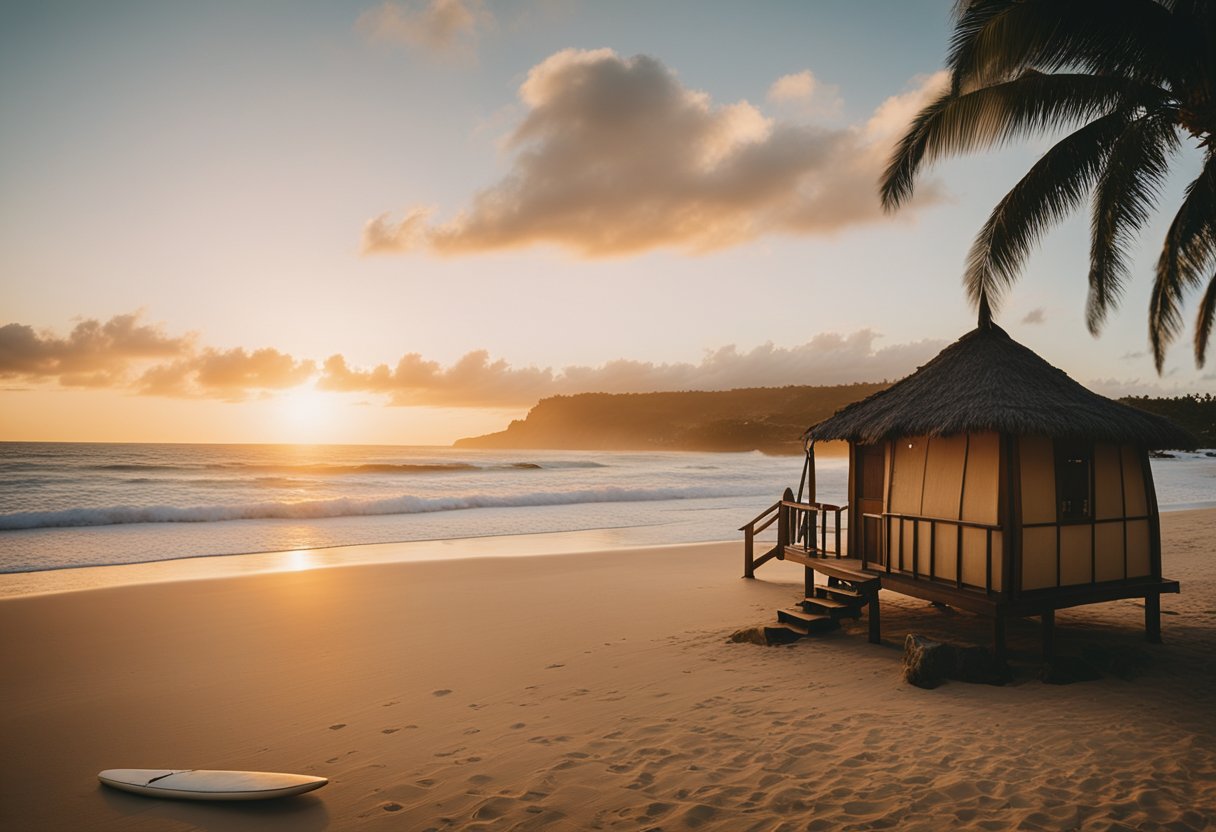
Updated On: March 25, 2024 by Noha Basiouny
Surfing in Hawaii and Australia is deeply entwined with both regions’ history, traditions, and very identity. In Hawaii, where surfing originated, it’s more than just a sport; it’s a legacy of the ancients, an integral part of the local way of life that has resonated across the world, or in Australia, where the culture has adopted surfing as a keystone of its coastal lifestyle. Both regions are revered for their remarkable waves and have honed local and international surfers who ride them with a reverence for the traditions that dictate their approach to the ocean.
The evolution of surfboards from wooden to modern designs mirrors the intricate journey of the surfing culture itself, transforming from a ceremonial pastime into a global phenomenon. The shores of Hawaii and Australia have seen the likes of Duke Kahanamoku and Mark Richards, individuals who have not only showcased exceptional skills on the waves but have also left an indelible mark on the sport and culture of surfing. Our recognition of these figures and events is as crucial as the conservation efforts that preserve the pristine conditions needed for surfing’s survival, ensuring future generations can continue to engage with this iconic cultural element.
Table of Contents
Origins of Surfing
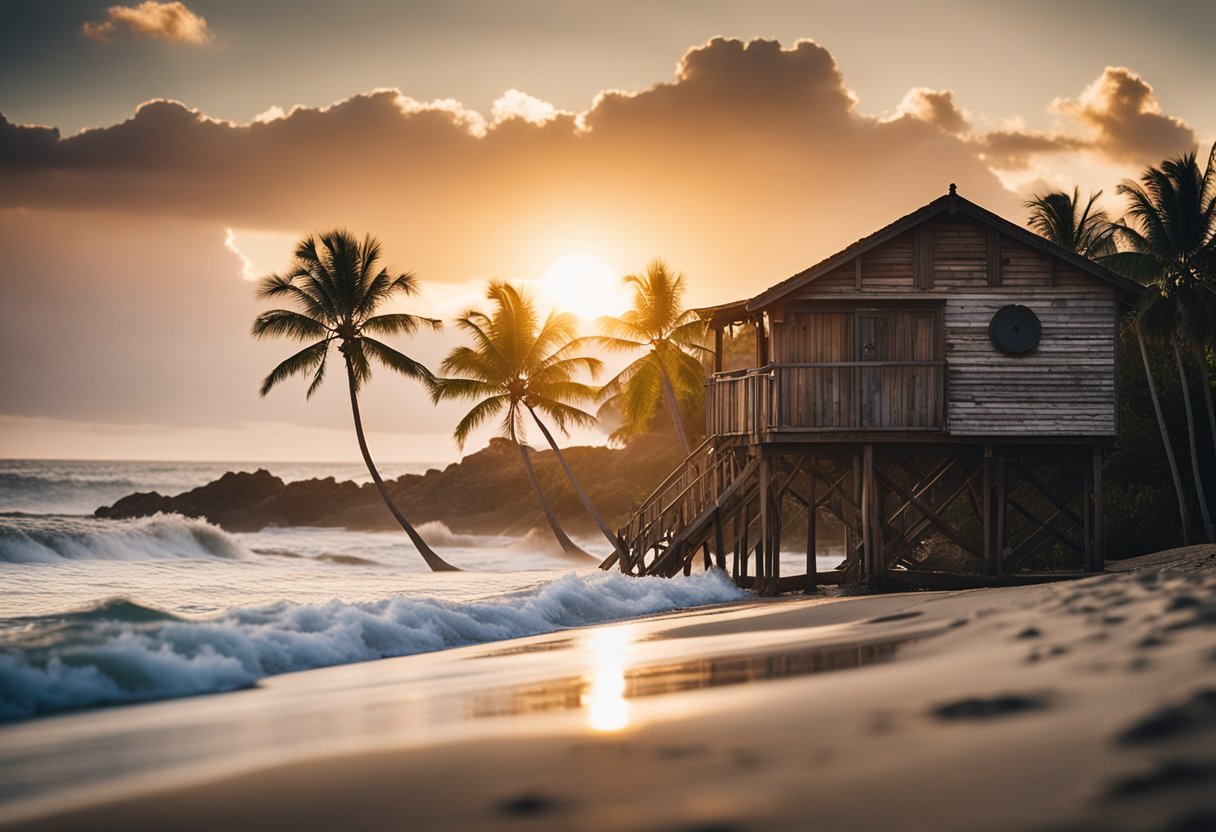
In this section, we’ll explore the foundations of surfing, tracing it back to its Polynesian roots, observing its evolution in Hawaiian culture, and witnessing its introduction to Australia.
Ancient Polynesian Roots
In ancient Polynesia, the art of riding waves was not merely a pastime; it was woven into the fabric of society. The practice is believed to have originated thousands of years ago, with the earliest observations of wave-riding activities in the islands that now make up French Polynesia.
Spread to Hawaii and Emergence of Hawaiian Surf Culture
As Polynesian navigation skills led them to the Hawaiian Islands, surfing, known as ‘he’e nalu’, found its new home. The ancient Hawaiians embraced these techniques, and surfing became a central part of Hawaiian culture. Social class dictated the size and style of the surfboard; the ‘olo’ was reserved for royalty, while the commoners rode the ‘alaia’. Icons like Duke Kahanamoku later brought Hawaiian surfing to international attention, bridging traditional island practices with modern global sports culture.
Introduction of Surfing to Australia
Surfing splashed onto the Australian shores in the early 20th century. Reports suggest that native Hawaiians, including Duke Kahanamoku, shared their knowledge and passion for surfing with the Australians, seeding what would become a cornerstone of the coastal lifestyle. Surfing has since become integral to local customs along the extensive Australian coastline, forging a parallel yet distinct surfing identity.
Evolution of Surfboards
In the dynamic history of surfing, the surfboard has undergone significant transformations – from the sacred wooden boards of ancient Hawaiian culture to today’s advanced materials and designs that continue to push the boundaries of this iconic sport.
Traditional Hawaiian Designs
In ancient Hawaii, the crafting of surfboards was deeply spiritual, with native woods like koa and wiliwili reserved for constructing these revered items. These traditional surfboards varied in size and shape, often reflecting the social status of the surfer. The ‘olo’ design, reserved for Hawaiian royalty, could reach lengths of up to 24 feet and was meticulously shaped from the wiliwili tree.
From Redwood to Fiberglass
As the 20th century progressed, surfboard materials evolved from heavy native woods to lighter, more manoeuvrable American redwood. This transition was pivotal as it meant that more people could participate in surfing. The introduction of fiberglass in the 1930s marked a groundbreaking shift in surfboard production, offering enhanced performance and durability. Tom Blake’s significant innovations in surfboard design, such as the hollow surfboard, signalled the beginning of the modern surfing industry.
The Shortboard Revolution
The late 1960s witnessed the birth of the Shortboard Revolution, a pivotal era that drastically altered the surf culture and industry. This period saw the surfboard’s length cut nearly in half, allowing for greater manoeuvrability and a radical new style of surfing. The rapid advancements in surfboard design and materials, including the use of fiberglass and foam, led to an explosion of creativity within the sport and forged the path for the modern surfing experience we know today.
Prominent Surf Locations
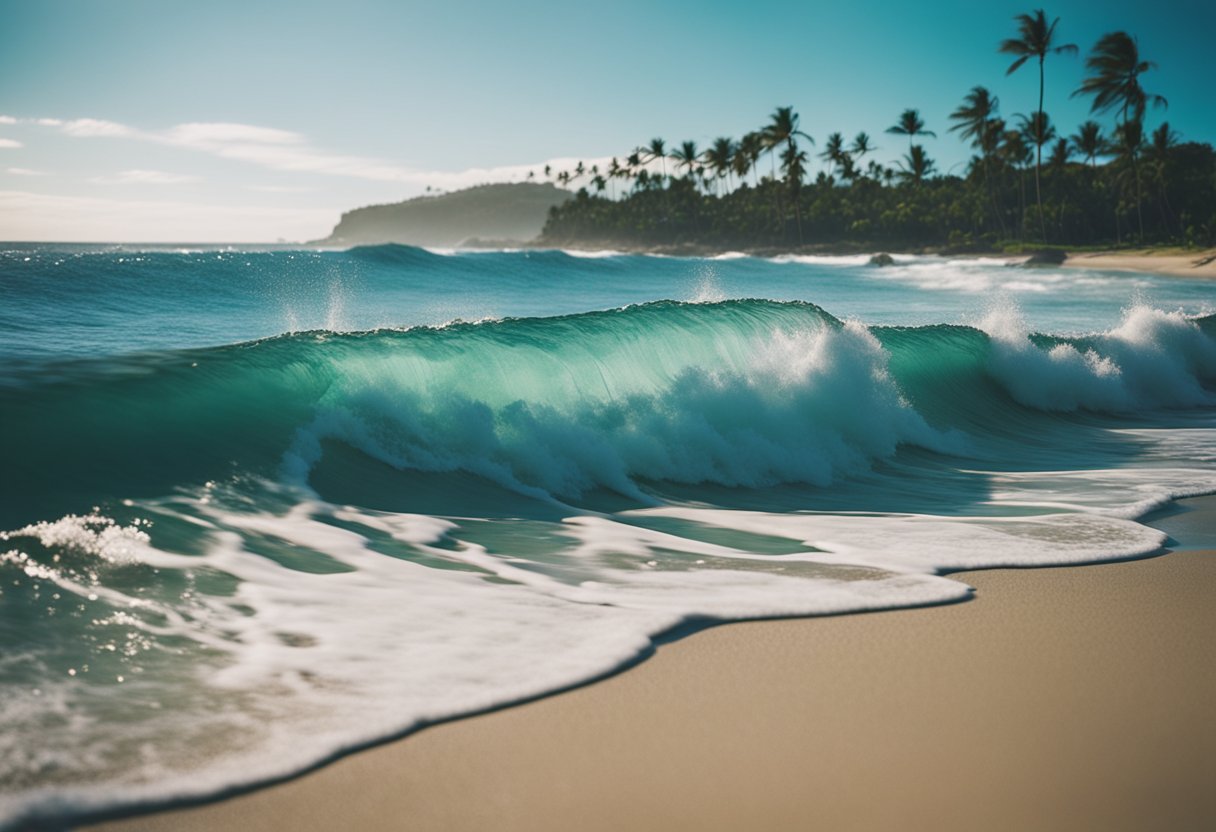
Our discussion zeroes in on the quintessential surf locales that serve as pillars of surf culture in both Hawaii and Australia. These areas are not just beaches; they symbolise tradition and are steeped in surf lore.
Hawaii’s North Shore and Iconic Breaks
The North Shore of Oahu is a legendary stretch that has become synonymous with surfing. In particular, spots like Banzai Pipeline, with its formidable tubes, present surfers with the challenge of navigating the powerful Pacific. Sunset Beach and Waimea Bay further contribute to the North Shore’s reputation, each offering waves that command respect from surfers worldwide. These waters are not just for professionals; they’re a canvas for all who dedicate themselves to the surf.
- Banzai Pipeline: known for its heavy barrels and expert surfers.
- Sunset Beach: acclaimed for its high-performance waves.
- Waimea Bay: famous for pioneering the big wave surfing movement.
Australia’s Gold Coast and Surf Spots
The Gold Coast in Australia is another cornerstone of surf culture, boasting spots like Snapper Rocks and Kirra, offering some of the world’s most consistent and coveted waves. Locations such as these are essential in the international surf community and hold numerous competitions that draw in surfers of every calibre.
- Snapper Rocks: celebrated for its superbank providing long, perfect barrels.
- Kirra: once known for its classic long barrels, it still holds a special place in surfing folklore.
Surfing is more than a sport; it’s a communion with nature where one’s mettle is tested against the waves.
Cultural Significance
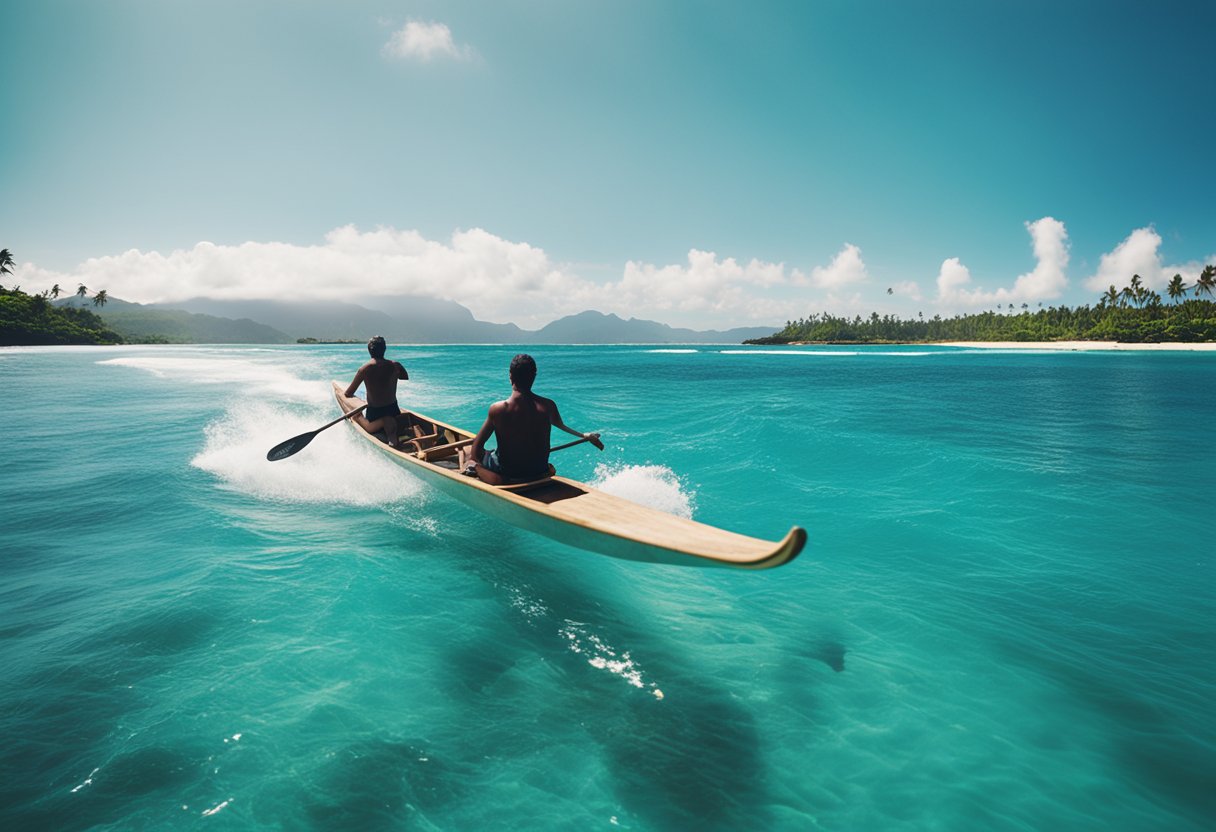
In discussing the cultural significance of surfing, we explore two distinct regions: Hawaii and Australia. Each has a profound connection with this sport, where it is not merely a leisure activity but also an integral part of their cultural essence and social fabric.
Surfing as a Hawaiian Way of Life
For Hawaiians, surfing, known as “he’e nalu,” is more than just a sport—it’s a pivotal aspect of our lifestyle, tying deeply into our social and spiritual realms. Chiefs and commoners alike found joy and prestige in skilfully manoeuvring waves. The kapu system, which governed social order, often reserved specific beaches or boards for royalty, illustrating surfing’s role in delineating status. Our stories tell of surfing gods and goddesses, reflecting the sport’s divine association. Today, surfing remains a testament to our enduring cultural identity and pays homage to our ancestors’ traditions. Learn more about the significance of surfing in Hawaiian culture.
Australian Surf Identity
In contrast, the surf culture in Australia conveys a strong aspect of their national image, epitomising the laid-back lifestyle associated with Australian beaches. Surfing has shaped the cultural identity, especially along coastal regions, creating a communal ethos linked with nature, resilience, and camaraderie. It’s a celebration of freedom and a nod to indigenous connections to the ocean. The surf narrative has been woven into Australia’s popular culture, portraying surfers as symbols of adventure and carefree living. The Australian affinity for surfing has also propelled the sport onto the global stage through competitive surfing and industry influence. Discover the impact of surfing on Australia’s cultural identity.
Historical Figures and their Impact
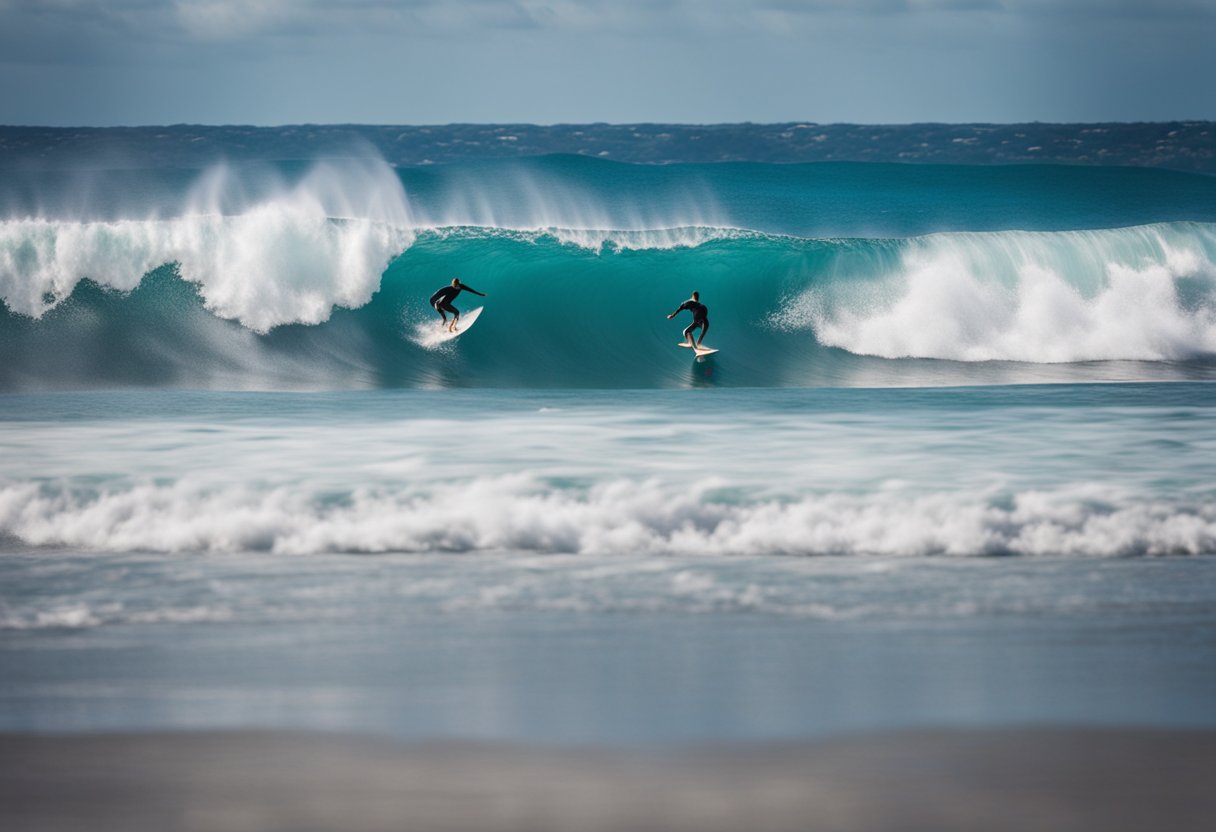
In delving into the surf cultures of Hawaii and Australia, we must pay homage to the legendary figures who shaped their rich traditions. Icons like Duke Kahanamoku have left indelible marks on the world of surfing, influencing not only the sport itself but also the cultural identity of coastal communities.
Duke Kahanamoku’s Legacy
Duke Kahanamoku, fondly known as the father of modern surfing, was a native Hawaiian whose expertise on the waves garnered global attention. An Olympic swimmer as well as a consummate waterman, Kahanamoku’s prowess was not confined to the surf alone. His Olympic victories in swimming brought prestige to Hawaii and showcased the athletic excellence of its people. His introduction of surfing to the shores of Australia and the mainland United States catalysed the international expansion of the sport. To this day, the Duke Kahanamoku Invitational Surfing Championship honours his legacy, celebrating the sport’s enduring appeal and Kahanamoku’s pioneering spirit.
Other Notable Watermen and Women
George Freeth, another influential figure, often stands in the shadow of Kahanamoku yet was vital in transforming surfing from a regional pastime into a mainstream sport. Hailed as a waterman, Freeth was instrumental in rejuvenating surfing in the early 20th century, demonstrating its appeal beyond Hawaii’s shores.
Across the Pacific, Australia’s surf culture has been influenced by its own pantheon of waterborne icons. Pioneers like Isabel Letham, who rode the waves with Duke Kahanamoku during his visit to Australia, played crucial roles in nurturing the sport’s growth. Similarly, Australian surf champions have consistently pushed the boundaries of what’s possible on a surfboard, ingraining surfing into the country’s cultural fabric.
In our exploration, historical figures such as these are central to understanding the tapestry of surf culture in Hawaii and Australia. Their contributions transcend mere athletic achievements and have become foundational to the coastal identities of these regions.
Surfing’s Integration into Society
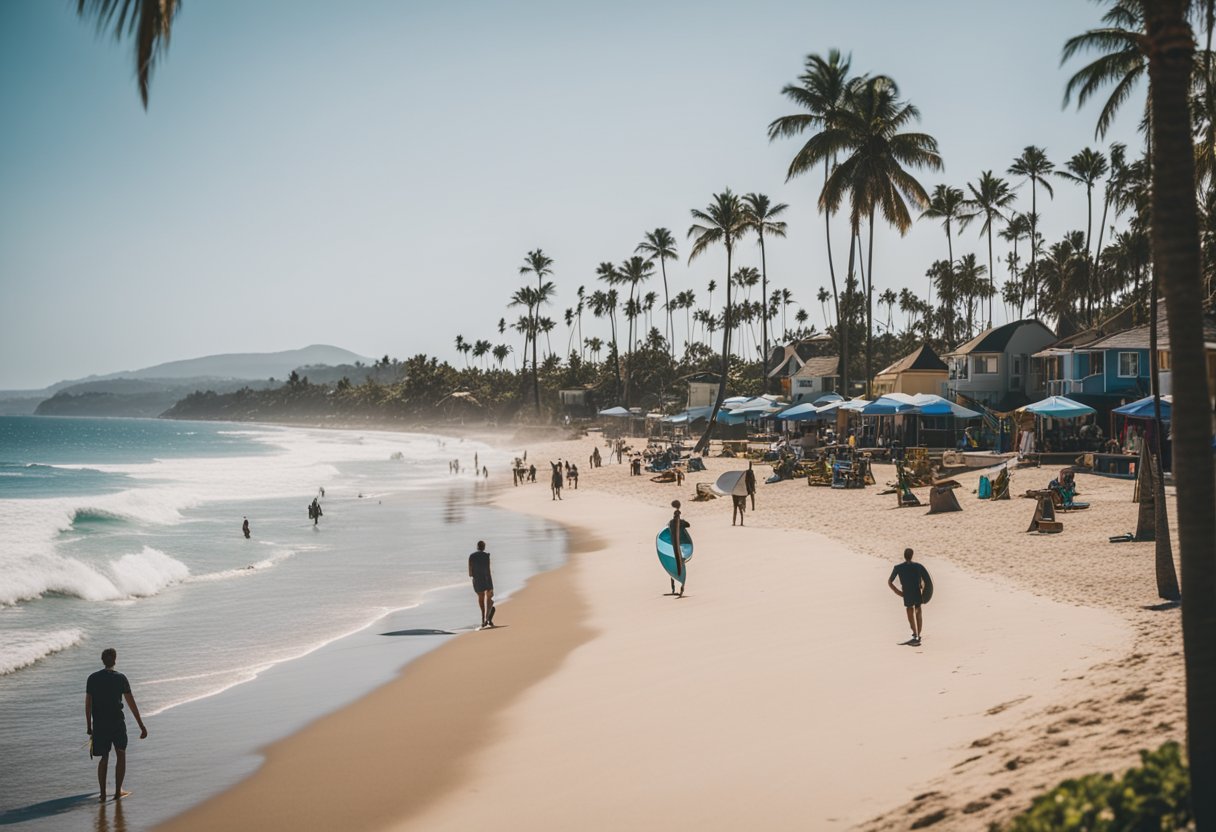
The profound impact of surfing stretches beyond the waves, deeply influencing societal trends, economic growth, and cultural exchanges both in Hawaii and Australia, through an expanding industry and widely consumed media.
The Surf Industry’s Expansion
The surf industry has burgeoned into a global phenomenon, characterised by a diverse range of products, fashion, and equipment tailored to the surfing lifestyle. This economic boost is felt from the buzzing coastal towns of Australia to the archipelago of Hawaii, where businesses thrive by catering to both the local surf communities and a steadily growing tourist interest. Renowned for boards, apparel, and accessories, surfing’s appeal has helped spawn multinational brands that support local economies and provide employment opportunities tied directly to this aquatic pastime.
Surf Media and Film
At the forefront of surf culture’s integration into wider society is the surf media and film industry, which has played a pivotal role in broadcasting a once niche hobby to a global audience. Hawaiian and Australian filmmakers, such as Bob Evans, have captured the essence of surfing, showcasing the thrill and beauty of the sport through surfing documentaries and magazines. Surfing’s depiction in films and media not only bolsters the industry but also immortalises the soundtracks and styles intrinsic to it, fostering a broader cultural resonance. Surf music, for example, characterised by its distinctive guitar riffs and laid-back rhythm, has become synonymous with the laid-back lifestyle promoted by the surf scene.
Modern Surfing Competitions
Surfing competitions have evolved from local community events into major global sports phenomena. These events showcase some of the most skillful surfers from around the world and attract a vast audience, underlining the progression of surfing as a competitive sport.
From Local Matches to Global Events
What began as friendly challenges between local surfing communities has now expanded across the globe. Modern surfing competitions range from small-scale amateur contests to large international championships, reflecting the sport’s widespread appeal. The World Surf League (WSL) stands as the apex, overseeing professional surfers as they compete in various countries. Such competitions not only celebrate surfing prowess, but also foster cultural exchange and tourism, injecting vitality into local economies.
World Surf League and the Triple Crown
As the premier institution in professional surfing, the World Surf League plays a critical role in structuring the competitive scene. It organises a series of events, with surfers accumulating points towards their professional standings. Within this framework, among the most prestigious events is the Triple Crown of Surfing, held on the North Shore of Oahu. This competition consists of three events that test a surfer’s ability to master some of the world’s most challenging waves. It is not just a test of skill but also an homage to the history and tradition inherent within the surf culture of Hawaii.
Influences Beyond the Waves
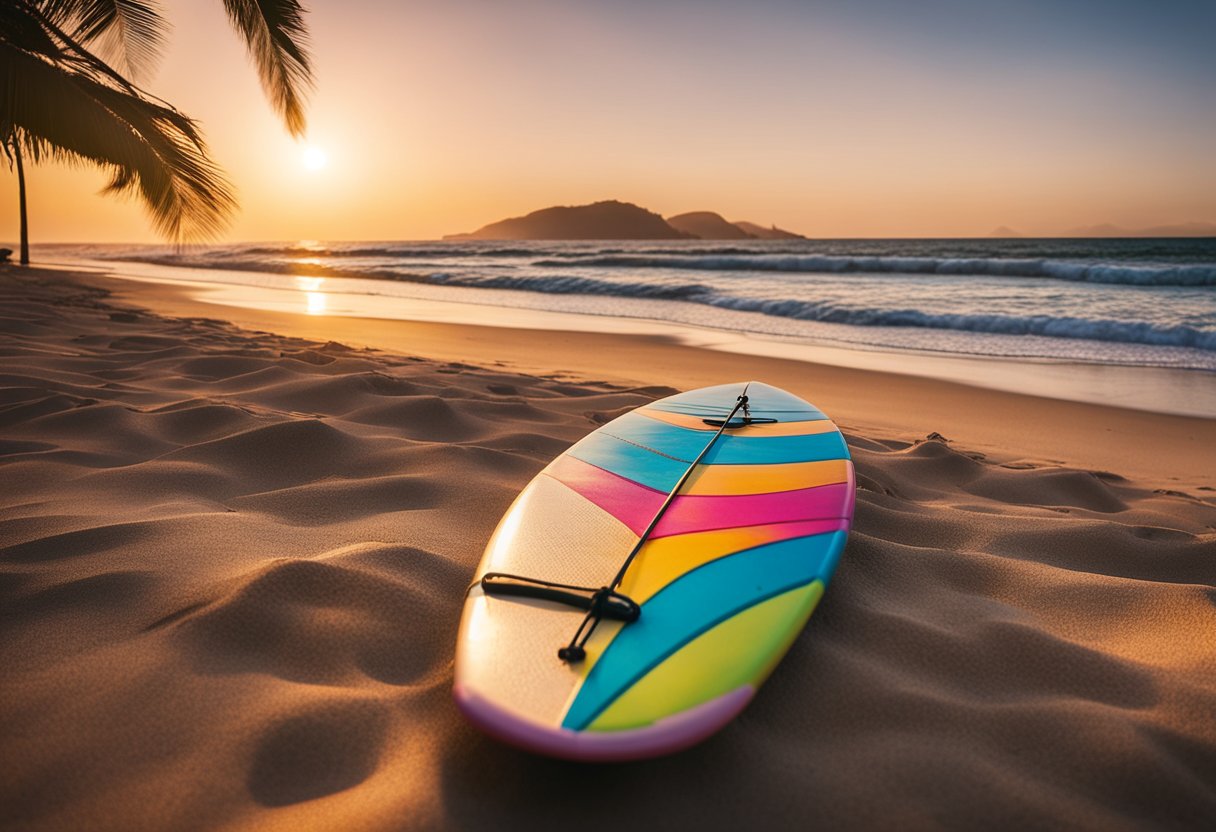
Exploring the rich tapestry of surf culture reveals its far-reaching impact, most notably in the realms of fashion and art, extending well beyond the sun-soaked beaches and into the very fabric of mainstream lifestyle and aesthetics.
Surf Fashion and Lifestyle
The unmistakable laid-back yet vibrant surf lifestyle has woven its threads through the fashion world, with an array of clothing items derived from surf culture. Iconic bikinis and baggies (boardshorts), once solely functional attire for surfers, now underscore a global fashion trend emblematic of freedom and a connection to nature. The aesthetic appeal of surf fashion is characterised by its utilitarian design, bright patterns, and loose fits, catering to comfort and style both on and off the beach. Brands like Quiksilver and Billabong rose from their foundational surfwear to mainstream fame, showing the undeniable linkage between the waves and wardrobes worldwide.
Music and Art Influenced by Surfing
The influence of surf culture on music is as clear as the Hawaiian waters. It has spurred a genre known simply as surf music, with The Beach Boys’ harmonies encapsulating the essence of surfing’s free spirit. The art scene, too, is replete with surf-inspired works, from vibrant photography capturing the ballet of surfers and waves, to street art portraying iconic surf scenes. Art and music festivals along coastlines celebrate this synergy, fostering a community that revolves around the common love for the vast ocean and its rhythmic waves.
Threats and Conservation
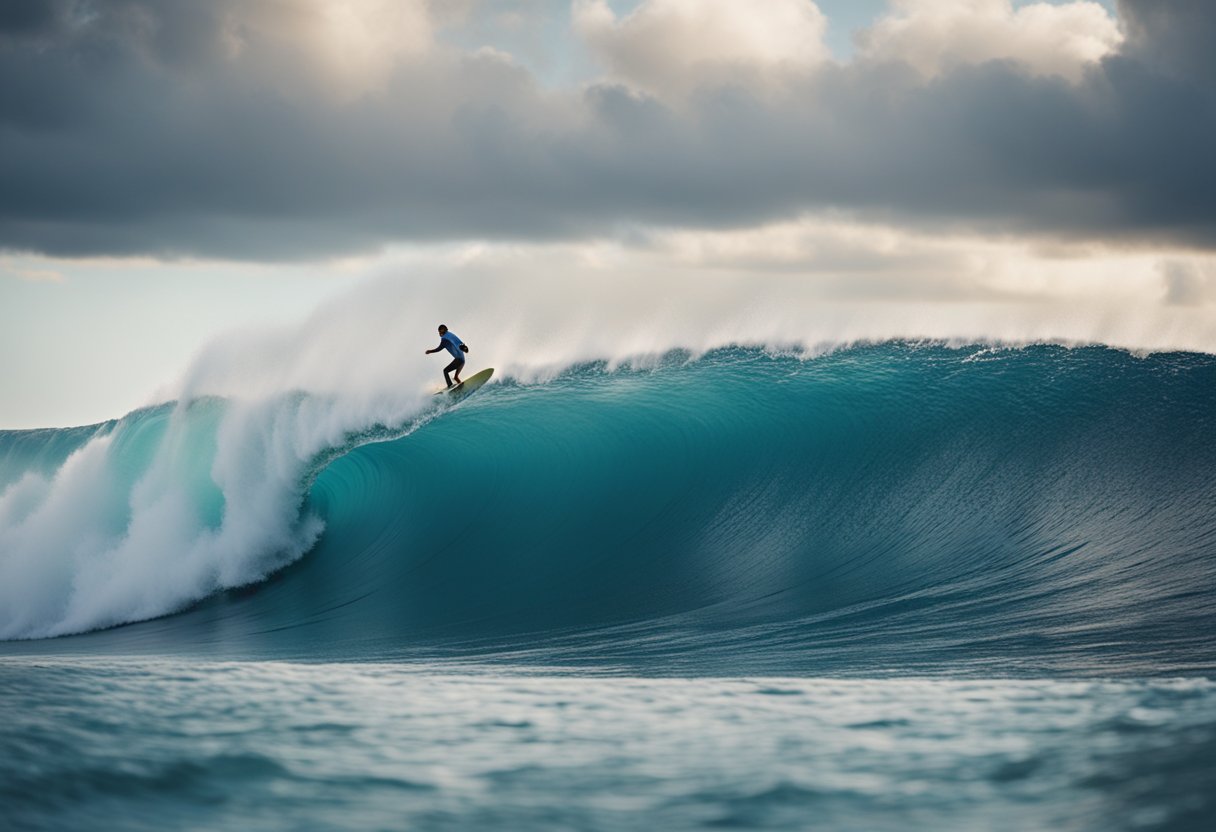
As custodians of our planet and guardians of our culture, we understand that the surf culture of Hawaii and Australia faces real threats due to environmental changes and the pressing need for conservation efforts.
Environmental Challenges Facing Surf Spots
Hawaii and Australia are renowned for their iconic surf spots that draw surfers from across the globe. These treasured locales confront environmental challenges that include coastal erosion and water pollution. Coastal developments and climate change-induced sea-level rise threaten the very existence of these prime surfing beaches. In Hawaii, ecosystem stresses such as coral bleaching affect not only the marine life but also the quality of the waves themselves. Our commitment to environmental conservation is key as we strive to maintain the health of these ecosystems for surfers and marine life alike.
Preservation of Surfing Heritage
The preservation of surfing heritage is central to maintaining the cultural identity associated with the sport. In the Hawaiian Islands, surfing, or ‘heʻe nalu’, is more than just a sport; it’s a sacred art interwoven with local customs and history. Efforts to protect this heritage from commercialisation and cultural appropriation are ongoing. Initiatives like the Surf Conservation Partnership aim to safeguard surfing habitats, ensuring future generations can appreciate and participate in this culturally significant practice. Localism within the surf community often plays a role in these efforts, underpinned by a respect for tradition and a shared connection to the waves and the land.
Language and Expression
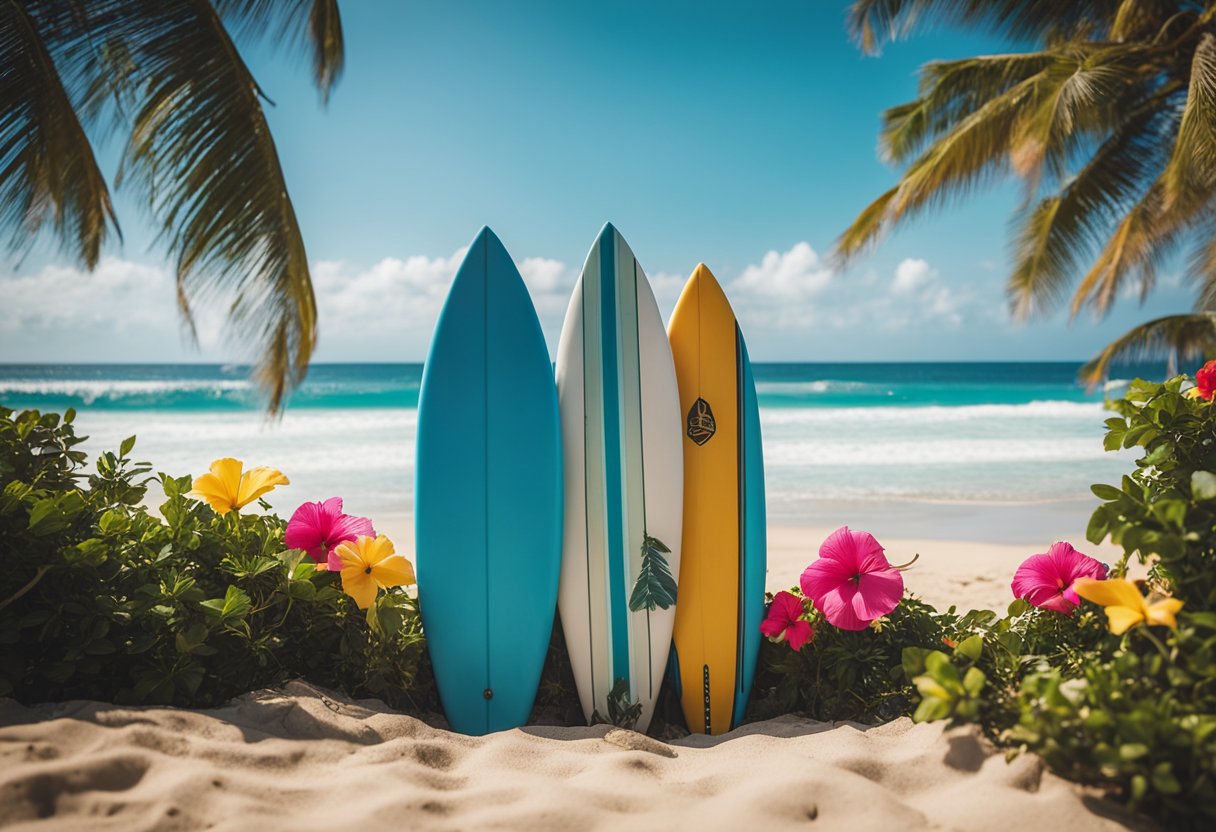
Language plays a pivotal role in the surfing cultures of Hawaii and Australia, shaping identities and connecting communities through unique expressions and jargon.
The Evolution of Surf Jargon
Surfing jargon in Hawaii has evolved significantly, reflecting the depth of the sport’s Polynesian roots. Terms like “aloha,” embodying love, peace, and compassion, have remained central to local surf culture. Hawaiian surfers communicate not just stances and manoeuvres but a whole ethos through their language. A comprehensive list of Hawaiian words every surfer should know showcases the deep connection between the surf culture and the native language.
In Australia, surf slang also developed unique local flavours, bridging lifestyles and shaping the Australian surf identity. The distinctive Aussie surf talk reflects aspects of broader Australian English, peppered with expressions that are understood across the surfing world.
Surfing’s Influence on Popular Language
Surfing’s global popularity has seen its language percolate into everyday use beyond the waves. Phrases like “gnarly” to describe something extreme or “duck dive,” a technique to avoid unwanted waves, have found their way into common parlance. Surfer slang fills a niche in the English language, vividly capturing experiences for which there are no existing words. SurferToday provides an insightful look into the language of the waves, highlighting its broader influence.
These dynamics demonstrate how surf-related expressions have transcended regional confines. Our conversations subtly reflect the heritage and values embedded within the surf cultures of both Hawaii and Australia, evidencing a rich linguistic legacy.
Frequently Asked Questions
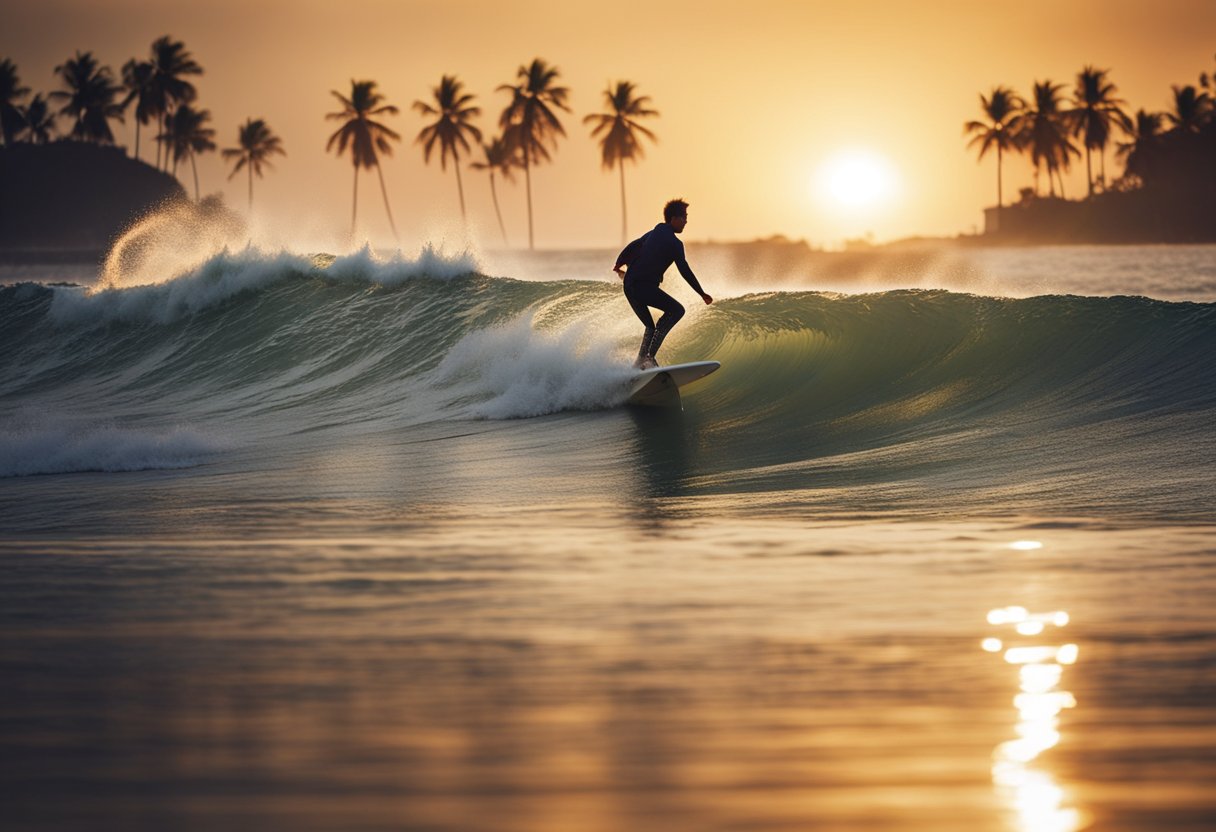
In this section, we address some of the most common inquiries about the surf culture and lifestyle in Hawaii and Australia, delving into its slang, evolution, traditions, fashion, and significance within society.
What are the hallmarks of surf culture and lifestyle in Hawaii and Australia?
The surf culture in Hawaii and Australia is characterised by a deep respect for the ocean and the art of wave riding. In Hawaii, surfing is not only a sport but also an integral part of Hawaiian heritage, while Australia boasts a robust surfing industry and a lifestyle that often revolves around the beach.
How has surfing slang developed and what are some key terms?
Surfing slang has evolved to include terms such as ‘gnarly’ for something extreme, ‘hang ten’ for riding a wave with all ten toes over the board’s nose, and ‘wipeout’ when a surfer falls from the board. This lingo reflects the camaraderie and shared experiences of surfers.
What was the surf culture like in the 1960s and how has it evolved?
In the 1960s, surf culture was synonymous with rebellion and non-conformity, epitomised by the carefree beach lifestyle. Since then, it has evolved to become more inclusive and mainstream, yet still retains an edge of counterculture.
Can you describe some of the longstanding surfing traditions in Hawaii and Australia?
In Hawaii, surfing traditions stem from its Polynesian roots, where it was once a pastime reserved for royalty. Today, rituals such as the blessing of the surfboards remain important. In Australia, surfing contests and clubs with a long history continue to celebrate and progress the sport.
What attire is typically associated with surf culture fashion?
Surf culture fashion includes board shorts, rash guards, and flip-flops, combining practicality with a casual, sun-soaked aesthetic. The iconic surf brands born from both Hawaiian and Australian coasts are now recognised globally.
What significance does surfing hold in Hawaiian and Australian societies?
In both Hawaii and Australia, surfing is more than just a recreational activity; it is deeply embedded in the social fabric and often represents a connection to nature, a commitment to physical fitness, and a medium for self-expression and community identity.






